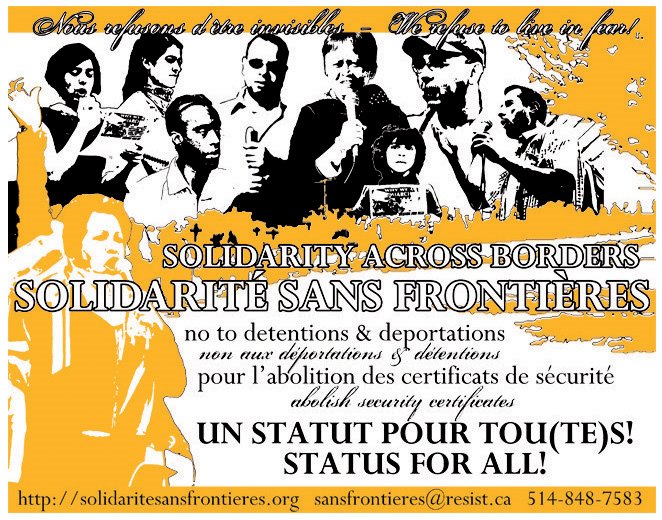Mon, January 15, 2007
Love ... and hate
UPDATED: 2007-01-15 01:58:15 MST
9/11's echoes and mixed bliss
By VIVIAN SONG
Canada is often celebrated as a nation of immigrants.
Many other nations are now struggling with their own changing demographics.
As the immigration patterns change the face of Canada, Sun Media and Leger Marketing ask some difficult questions of Canadians across the country. We encourage you to ask them of yourselves.The discussion and debate on how we live together in a changing Canada is worth having.
---
The news didn't come as a surprise but the expectation didn't dull the sting of the truth either.
When told that a Leger Marketing poll for Sun Media revealed that Canadians have the lowest opinion of the Arab community, Khaled Mouammar didn't pause or express alarm.
Instead there was a slight sigh of resignation as the president of the Canadian Arab Federation -- who is not Muslim -- launched into a frank dialogue on the state of Arab-Canadian relations.
"What you're saying confirms that when people have low esteem of an ethnic group, they're not going to hire them, or socialize with them," Mouammar said. "This is why young Arabs and Muslim youth are facing issues of low self-esteem, alienation and marginalization."
Little more than half of Canadians polled had a good opinion of the Arab community at 53%, while other groups received majority approval.
Mouammar pointed to a recent 2006 report from the Canadian Labour Congress that found unemployment rates were highest among Arab and West Asian populations in Canada at 14%, followed by Blacks at 11.5%.
His concerns were echoed by the executive director of the Canadian Race Relations Foundation, who also called for less talk and more implementation of antiracism legislation such as the Employment Equity Act.
"Canada on the surface has viable legislation that deals with racism but the implementation side is lacking," said Ayman Al-Yassini.
"Members of racialized groups are not getting jobs they're qualified to fill because of stereotyping."
The latest annual report out of the Canadian Human Rights Commission, in 2005, chastizes the public sector for continuing to underutilize visible minorities. They hold just 8.1% of all public sector jobs, while the private sector was applauded for its overall representation.
The stunning arrests of 17 terror suspects in Toronto last summer also brought the Anti-terrorism Act to the fore. The act is an institutional form of discrimination, Mouammar charged.
"Instead of saying these are accused, alleged suspects, Prime Minister Stephen Harper congratulated the security forces. He really convicted them publicly before they were tried in courts."
But not everyone agrees.
"We demand that Charter rights be granted to all and that people be presumed innocent. But we don't think the Canadian government has acted contrary to that at all," said Munir Pervaiz, secretary of the Muslim Canadian Congress. In fact, Pervaiz called on Muslim-Canadians to do their part in educating Canadians, saying that instead of showing the diversity of the Muslim world they've chosen to "Arabicize" themselves, feeding the confusion.
"It's our duty to let Canada know what the true face of a Muslim is. It's very diverse, multinational and comes from a community as diverse as Canada now -- the Far East, Turkey, North Africa, India, and Sri Lanka."
NOT TRUTHFUL
Meanwhile, 47% of Canadians may admit to being somewhat racist, but one expert questions if the 51% of people who believe they're not are being truthful to themselves.
"We may not see ourselves as racist but we all have some kinds of racist attitudes to some extent," said Tuula Heinonen, an associate professor at the University of Manitoba specializing in cross-cultural adaptation.
Respondents likely interpreted the label differently, she explained, with some linking "racist" with behaviour -- never having assaulted someone because of their race may be enough for some to shirk the label.
"I think it's a good thing to realize you might be racist and that maybe you should think about it," she said. "If people are willing to admit, they might be more willing to do something about it."
- - -
It's called yellow fever.
A social phenomenon that describes the preference -- usually among men -- for Asian partners.
And it was precisely Scott Young 's immunity to the "fever" that Helen Kim, a Canadian-Korean, felt drawn to him, she says laughing.
"Part of what attracted me to him was because he had never dated an Asian before," she says in her Toronto-area home with son Noah, 2, in her lap.
"There was no legacy of yellow fever here," Young jokes in return.
Theirs is becoming an increasingly common story in Canada where mixed unions are on the rise. According to Statistics Canada, interracial couples made up 3%, or 452,000, of Canada's married or common-law couples in 2001 -- that's up 35% since 1991.
But while the majority of respondents had no problem dealing with a taxi driver, doctor, supervisor or neighbour of another ethnicity, their response was markedly different when asked how they would feel if their child were to intermarry.
Sixteen percent say it would depend on the race, and 9 % said they would react negatively.
"People in mixed unions tend to be younger, live in urban areas, and tend to be highly educated," said Anne Milan, senior analyst at StatsCan and author of the 2004 report titled Mixed Unions. Experts attribute the rise to Canada's growing diversity.
And some sociologists, like University of Toronto professor Monica Boyd, describe the growing trend as a barometer of social tolerance since marriage is such a binding union between two separate identities. "Intermarrying is the last frontier in social integration," she said. "It's an intimate act that produces the next generation. It's one of the most important indicators of acceptance and integration into an ongoing social world."
SMALLER POOL
Milan's study found that the Japanese are the most likely to partner outside their group. The long Canadian heritage of the J apanese community partially explains why they have the highest proportion of mixed unions, Milan says. But unlike the Chinese and South Asians, who are among the least likely to intermarry, the Japanese also have a smaller pool of eligible partners within their own group to choose from, she added.
And what of the children born of these mixed unions? It's often said mixed babies make for beautiful children and Noah is no exception. His features are distinct, a hypnotic blend of Caucasian and Asian traits: Dark, round eyes set in almond hollows, soft chestnut hair and impossibly porcelain skin.
But if intermarriages result in mixed children, is there a fear of cultural and ethnic dilution?
"The only thing I'm more worried about is if he gravitates more towards one culture," Young said.
Noah is a bright young tot with a growing vocabulary --an English one.
He is already well-versed in hockey jargon -- and deft with a stick-- but only recently learned from his grandmother how to count in Korean.
Kim likens Noah's mixed heritage to her own identity as a Canadian-Korean: She takes the best of both worlds.
"I'll sign him up for Korean lessons but I won't force him. Just how I'll sign him up for French and Spanish," Kim said.
She's already anticipated a scenario in which Noah will be forced to gaze back at himself.
"I asked Scott how he would handle it when Noah comes home crying because someone called him a Ch---," she said.
For now, Noah sits quietly in his mother's lap.
His parents, too, have fallen into a brief silence when asked if it would bother them were their adult son to come home with a partner of another race.
Kim comes back with a resounding "no," while Young offers a more cautious response.
"I have no issue with ethnicity. I have an issue with personality. If it's a culture that forces him to change and become different, we probably wouldn't want that. As ong as he can make his own decisions."
skip to main |
skip to sidebar
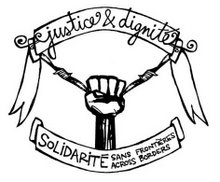



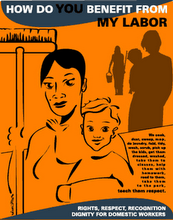

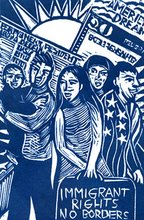


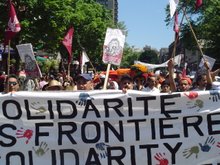

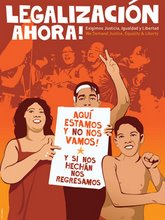
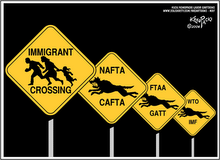




Blog Archive
-
▼
2007
(540)
-
▼
February
(124)
- Raymondville: Inside the Largest Immigration Priso...
- Human Rights Groups Call for Closure of Texas Jail...
- "I Want To Be Free": 9-Year-Old Canadian Citizen P...
- Canadian Council for RefugeesMedia ReleaseFor Im...
- Detention solution found wanting in Britain
- Foreign Workers Can Stay Longer in Canada, Tories Say
- More Mexican labour needed in oil patch, executive...
- Canada's hottest new import? Employees
- The Battle Over Immigration - U$A
- Families Behind Bars: Jailing Children of Immigrants
- Which Babies Are Real Americans?
- Court strikes down security certificates
- Top court rules against security certificates
- UN Grills Canada
- US War Resisters and the Legality of the Iraq War
- Report on the State of Racism in Canada
- UN wants guarantee that Canada won't repeat Arar e...
- Groups condemn immigration raids
- Appeals sought for refugees on run
- Amir Kazemian Accepted
- Canada turns crucial corner
- Charkaoui hails high court ruling
- Nafta Should Have Stopped Illegal Immigration, Right?
- Border Crackdown Spawns Violence. More Deaths Occu...
- Apatrides et menacés de déportation: Relance des p...
- Stateless & Deported: Re-launch of bi-weekly picke...
- Show Anti-Raciste dans Hochelaga
- La Cour suprême va se prononcer sur les certificat...
- Community Sanctuary: Celebrating Struggles for Jus...
- Sanctuaire Communautaire: Une célebration des lutt...
- Radio-Canada: Amir Kazemian est libre
- PC: Un réfugié iranien vivant dans une église est ...
- Winnipeg Free Press: Refugee family's children all...
- Globe and Mail: Iranian refugee granted asylum
- Emprisonnement de présumé terroriste
- Latvian national in St. John's church loses immigr...
- Iranian Refugee Arrested and Forced out of Sanctua...
- Protest groups seek abolition of controversial sec...
- Canadian boy caught in Texas detention
- La Cour ordonne la libération de Mahjoub, à la vei...
- Mohammad Mahjoub, le plus ancien détenu en vertu d...
- Mahjoub ordered freed pending government review of...
- Mohammad Mahjoub, Longest Held of Canada's Secret ...
- Terrorism suspect given hope by MPs' offer of aid
- Deportation Cases Not Properly Reviewed
- Gunmen Open Fire on Illegal Immigrants
- Kenyan-born man has credentials to be registered p...
- MPs meet with detainees on hunger strike
- (((( We send this article with the note that these...
- GUANTANAMO NORTH - DAY 80 OF HUNGER STRIKE
- Draconian' anti-terror laws must go
- National Union urges opposition to Anti-Terrorism Act
- The Don't Ask Don't Tell campaign is working on ma...
- Proceedings on hunger strike, Standing Committee o...
- Syria bars Iraqis refugees, crisis worsens
- US Doesn't Sign Ban on Disappearances
- U.S. May Be Mishandling Asylum Seekers, Panel Says
- Refugee agreement hurts queers
- UPDATE ON HUNGER STRIKES AT GUANTANAMO NORTH
- Refugee case tests safe-haven law
- Can't prove he's gay, teen is denied asylum
- Court acquits immigration consultant
- Canada, U.S. pact on refugees flawed, lawyer says
- Retour du balancier à Hérouxville
- Acommodements raisonnables
- Town stands by its norms
- Police officer faces discipline for penning song a...
- Muslim groups to launch complaint over town's immi...
- Immigrant debate has 'gone too far': Charest
- U.S. no safe haven for refugees, court told
- Passport applicants find they're not Canadian
- Guyana nationals still being held in N.B.
- 3 charged with human smuggling released
- Canaries migrant death toll soars
- Mauritania food aid for migrants
- Destination UK
- UK border plans unveiled
- Everyday Police Intimidation Caught on Film
- Position de la TCRI relatif au débat actuel sur le...
- Des grands-parents palestiniens menacés d’expulsion
- Déclaration en réponse au débat sur les « accomode...
- No One Is Illegal-Montreal statement on the racist...
- YMCA, fête du Solstice, Hérouxville...
- Immigrants battle chronic low income
- Up to Democrats to investigate Torture
- Hunger strikers being 'left to die' by 'unaccounta...
- Speak up, Mr. Harper – Guantanamo is a disgrace
- How does multiculturalism translate for minorities?
- Iranian refugee wins first battle in bid to teach ...
- How Canadian are you?
- 9/11's echoes and mixed bliss
- UN seeks haven for Iraqi refugees
- Canadians admit racist tendencies
- Immigrant teachers struggle to find work
- Activists descend on CBSA offices to protest Canad...
- One official's 'refugee' is another's 'terrorist'
- Need realistic policies on racism: Kenney
- Cdns wants tighter immigration controls
- Immigrants Mistreated, Report Says
- Protesters push for action on immigration issues
-
▼
February
(124)


Qui sommes nous:
Solidarité sans frontières est un réseau basé à Montréal qui lutte en faveur de la justice et de la dignité pour tou-te-s les sans-statut. Nous sommes un regroupement de migrant-e-s, d'immigrant-e-s, réfugié-e-s et leurs allié-e-s. Nous mobilisons pour toutes ceux et celles qui se battent contre la déportation, la détention et les certificats de sécurité.
About us:
Solidarity Across Borders is a Montreal-based network of migrants, immigrants, refugees, and allies engaged in the struggle for justice and dignity for migrants and refugees. We mobilize for all who are caught in the immigration regime and for all who fight against deportations, detentions, and security certificates.


Labels:
- War on Terrorism/Guerre contre le terrorisme (81)
- Fortress North America (64)
- Secret Trials/Proces Secret (58)
- Exploitation: Immigrant Workers/Travailleurs-EUSES immigrantEs (45)
- Migrant Resistance (37)
- Sanctuaire/Sanctuary (35)
- Detention (31)
- "Reasonable" Accomodation (30)
- Deportation (29)
- Fortress Europe (26)
- Racism (22)
- Indigenous Resistance (15)
- Propaganda (14)
- Police Harrasment/Harcelement policiere (10)
- Racial Profiling/Profilage Racial (10)
- Guantanamo (6)
- Anti-racism/Contre le racisme (4)
- Palestian Refugees/RéfugiéEs PalestinienNEs (4)
- Solidarity Across Borders (4)
- Solidarité sans frontières (4)
- Don't Ask Don't Tell (3)
- unionization/syndicalisation (3)
- Guantanamo North (2)
- LGBTQ (2)
- Labour (2)
- People's Commission (2)
- Police State/Etat policier (2)
- White Supremacy (2)
- Women (2)
- Raids (1)


Info:
(514) 848-7583
sansfrontieres[at]resist.ca
www.solidarityacrossborders.org

Contributors


Links:




